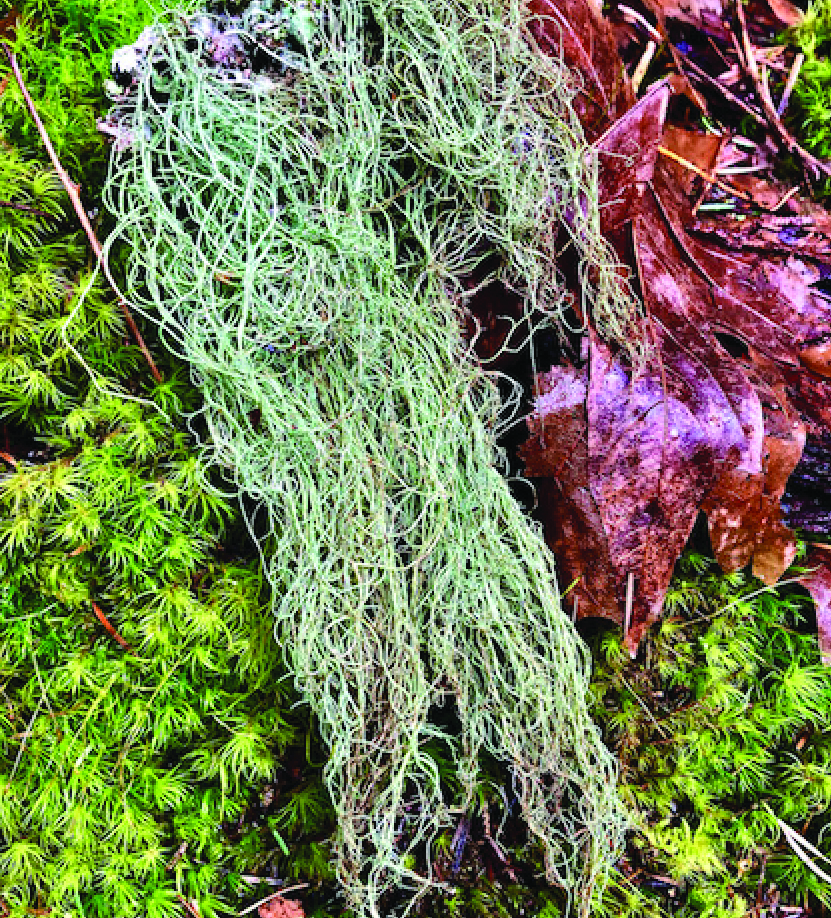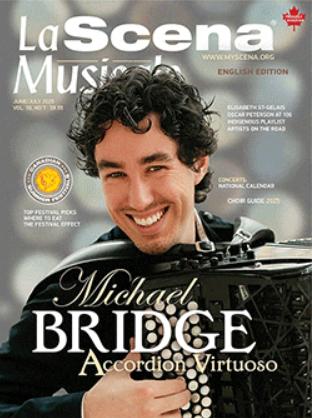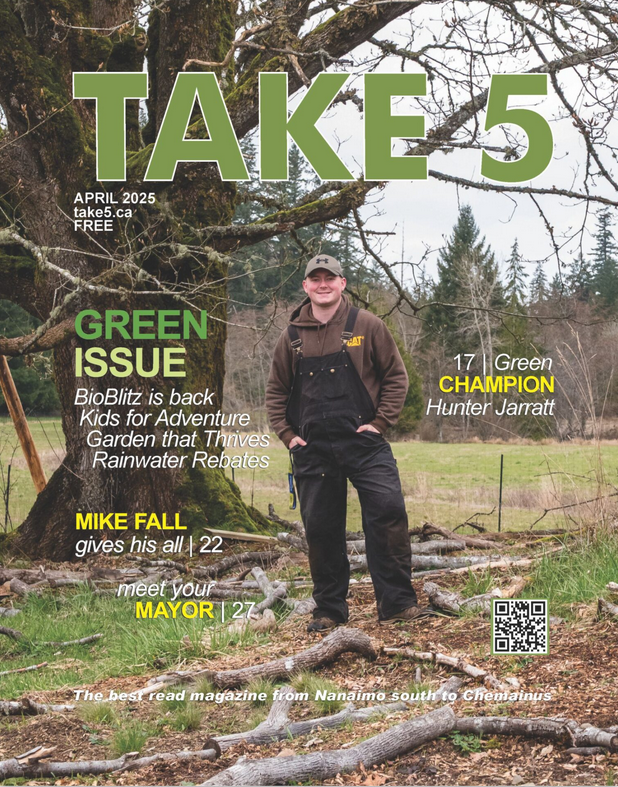By K. Brauckmann, EIS Naturalist, for TAKE 5, May 2022

There is an organism alive today that is older than the dinosaurs, has survived the mass extinction, and can be found from the Arctic to Antarctica and everywhere in between. It may surprise you to find out that it is neither plant, animal nor fungi. In fact, it belongs to a class of its own.
At first glance, this wonder may seem insignificant. You might walk past it on a sidewalk thinking it is an old piece of gum or a questionable stain, but no, that is a living organism. If you have given up on guessing what it is, I’ll let you in on this peculiar secret. Fossil records show that lichens are 250 million years old! So, when you see that mark on the sidewalk, you are walking by a creature that has been around since the Mesozoic Era!
Lichens were able to survive the mass extinction that wiped out dinosaurs because they are technically two species coexisting in one body. A lichen is a symbiotic relationship between an algae and a fungi. The fungi creates a protective outer layer for the algae to live inside and the algae photosynthesizes — something the fungi cannot do on its own. It was this fungal shield that created a greenhouse for the algae to survive inside when other organisms were wiped out. Having survived a mass extinction, these organisms can live anywhere: tundra, desserts, cities and even adrift at sea. Lichens are so tough that a specimen was able to survive a year outside the space station in open space, and when brought back inside, it continued to perform its normal functions.
Lichens also have medicinal uses. In the Wildwood Ecoforest, there are several species of lichen with healing properties. The most memorable for me is the commonly named old man’s beard from the genus usnea. According to Dr. Luschiim Arvid Charlie, it is called she’itun (literally “hair”) in Hul’qumi’num. These species have long light-green threads that can be spotted on almost any trail throughout the forest. It has antimicrobial properties and is good for treating infections.
Another species, which is slightly less noticeable, is the pixie cup lichen (Cladonia asahinae). It looks like a miniature version of Shrek’s ears — the character from the popular DreamWorks production — although they are much smaller, standing only a few centimetres tall. This species has antibiotic properties.
Tree lungwort (Lobaria pulmonaria) is called smuxt’ulus in Hul’qumi’num. It is a leaf-like lichen that grows on trees and has lobes that resemble lung tissue. It is bright green on one side and silvery-grey on the other, and is used to treat ailments of the lung. According to Dr. Luschiim Arvid Charlie, it can be made into an energizing drink similar to Gatorade.
These are just a handful of the wondrous lichen species found at Wildwood. I hope you are as fascinated with these incredible organisms as I am, and remember, if you are planning to take a closer look at one of these lichens, make sure to only gather what has fallen to the forest floor already. Do not harvest lichens that are still growing.
Please note the information in this article is for educational purposes only. Please consult a medical professional to treat any medical ailments.
See this article in the May 2022 issue on issuu here.














